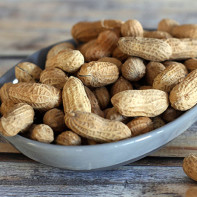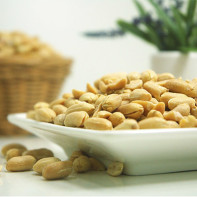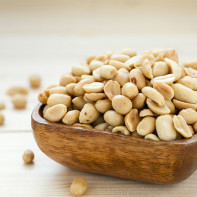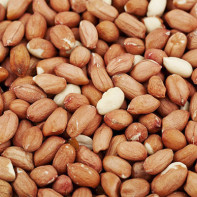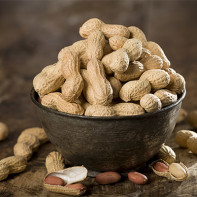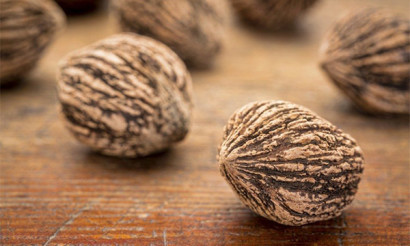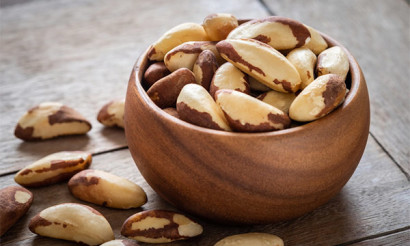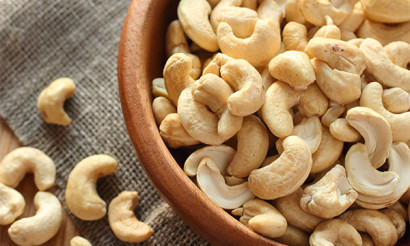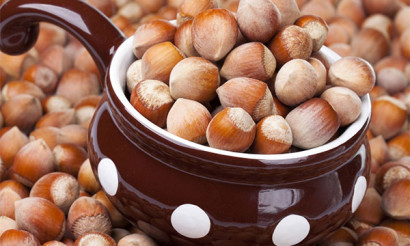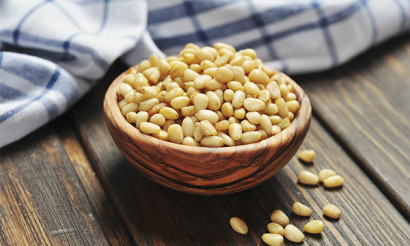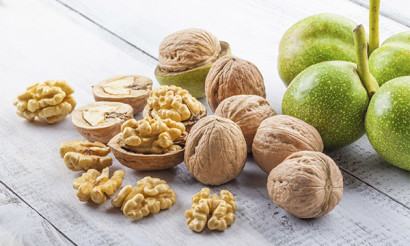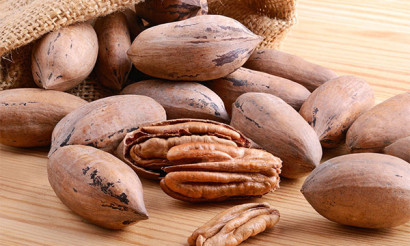Peanuts (raw and roasted): useful properties and contraindications
Peanut is an annual plant of the legume family. Although it all refer to nuts, this is incorrect.
- Where peanuts grow and what they look like
- Composition and calories
- What are the benefits of peanuts
- General benefits
- For Women
- For Men
- Pregnancy
- Breastfeeding
- For Children
- What is the healthier peanut: raw or roasted?
- The benefits of peanut husks
- Benefits of Peanuts with Honey
- Peanut Urbech: benefits and harms
- Is it possible to eat peanuts while losing weight?
- Peanuts in Medicine
- Diabetes Mellitus
- In pancreatitis
- For Gastritis
- For Intestines
- For constipation
- For gout
- For the liver
- For hemorrhoids
- Peanut-based folk medicine recipes
- Milk and Peanuts
- Peanut Decoction
- Vinegar and Peanuts for Hypertension
- Peanuts in cosmetology
- For Face
- For Hair
- Hazards and Contraindications
- Symptoms of Peanut Allergy
- How to choose and store peanuts
- What is the right way to eat peanuts
- How many can eat per day
- Can I Eat a Peanut at Night and on an empty stomach?
- Can I Eat with Peanut Shells?
- Can I Eat during Lent?
- Do I Wash the Peanuts Before Eating?
- How to Roast a Peanut
- In a Pan
- In the microwave
- In the oven
- Do I Wash the Peanuts Before Roasting?
- How to peel peanuts fast
- What to make with peanuts: Recipes
- Peanut Paste
- Peanut brittle
- Halva
- Can I Give Peanuts to Animals
- Interesting Facts
Where does a peanut grow and what does it look like?
The crop is grown in countries with warm climates, namely South America, which is its homeland, as well as China, Argentina and some regions of the United States.
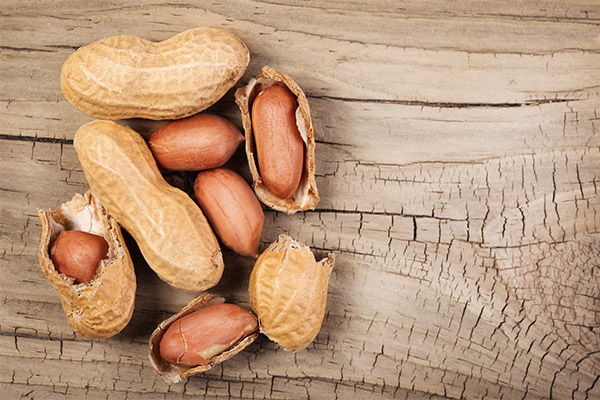
China is currently the largest supplier and producer, exporting 60% of the world's peanuts. But the best quality peanuts are those that grow in Argentina and the United States. This is due to the fact that the climate and soil are the most favorable for cultivation.
Argentina has now increased the size of the acreage for planting by a factor of 4. And that's what has helped reduce the price of the product, and even rare varieties such as Runner and Redskin are beginning to be grown. In Argentina, planting begins in November. The peanuts grow through the winter, and by May, the harvest is already underway and the product is on sale. Shipment begins one month later, in June.
Interestingly, the second name for peanuts is groundnut, although the fruit has nothing to do with nuts. It grows on a bush in the form of beans, on a stem, and the root system is in the ground. But the process of full pod maturation takes place in the ground, since the original home of the fruit was the desert and arid places. In order for the beans not to dry out, but to retain moisture, they must be in the ground.
The place where the peanut grows determines all of its special qualities: its color, size, taste, and oiliness. For example, large beans grown in China are completely flavorless and odorless, while sweet Indian peanuts are very small in size. That is why at the moment the best representatives of this culture are Argentine beans. All varieties grown in this country have the right shape, size and sweetish taste, which is what the fruit is supposed to have.
Composition and calories
Peanuts are rich in vitamins, amino acids and minerals. It is rich in vitamins B, E, H, PP and minerals (potassium, copper, zinc and silicon). They are contained there in greater quantities than in other representatives of legumes.
The energy value per 100 g of peanut kernels is 550 kcal, with 26 g of protein, 45 g of fat and 10 g of carbohydrates.
Because of the high fat content it is necessary to cut down the consumption of peanuts during the dietary compliance. At the same time it is not necessary to refuse from it at all, because the high content of useful substances balances the work of the body in a dietary diet.
What are the health benefits of peanuts
General benefits
The vitamin complex present in peanuts:
- Is useful for maintaining and improving the condition of the skin, hair;
- calms the nervous system;
- Normalizes the gastrointestinal tract, intestinal microflora;
- Regulates pressure, and is suitable for both hypertensive and hypotensive people;
- Suitable for regulating the heart muscle.
The beneficial effects of vitamins on the human body should be considered in more detail.
- B vitamins (B1, B5, B6, B9) promote accelerated healing of lesions of the mucosa of the stomach, intestines and blood vessels. Peanuts and peanut oil are a must for people who have undergone surgery. The product is also useful for diseases of the stomach and is even indicated for gastritis. The sufficient amount of this group in the body helps to improve skin, hair and bone tissues.
- Vitamin E helps with disorders of the heart muscle, it is also called the vitamin of youth and beauty. It promotes the production of collagen, which prevents the premature appearance of wrinkles.
- Vitamin PP provides normal functioning of the gastrointestinal tract. Its lack in the body is fraught with disorders of the digestive and nervous systems.
- Silicon as well as vitamin E produces collagen.
- Magnesium reduces the risk of hypertension.
- Iron strengthens bone and muscle mass.
- Zinc prevents the occurrence of cirrhosis of the liver and immunodeficiency.
For women.
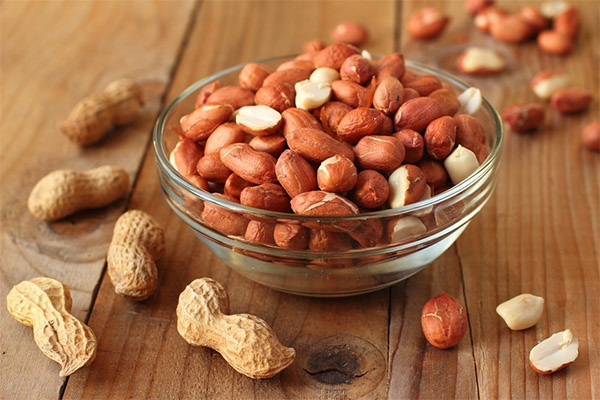
- Antioxidants (vitamin E and zinc) reduce the growth of breast cancer and even cysts.
- The product normalizes the hormonal background, reduces the symptoms of premenstrual syndrome, improves the function of the sex glands.
- Peanuts are a natural remedy for infertility, it also improves hair, nails and skin, gets rid of depression and mood swings.
For Men
- Methionine, which is found in large quantities in beans, promotes the production of adrenaline.
- The product cleanses the body of toxins, promotes the processing of fat.
- Peanuts have a favorable effect on sexual function and sperm activity, accelerates the recovery of strength and energy balance.
During pregnancy
- Vitamin B9 is necessary during pregnancy, it reduces the risk of abnormalities and inhibition of fetal development, and also reduces the likelihood of problems for the mother.
- Folic acid is necessary for women in expectation of a child, it contributes to the proper functioning of the genital system, the favorable development of the fetus, as well as the easy course of pregnancy.
- Due to the fact that the fats included do not contain cholesterol, their use does not have any negative effects, such as difficult absorption.
Cautions to consume are allergies and gas. Like all legumes, peanuts are difficult to digest. Therefore, it should be eliminated from the regular diet if symptoms of bloating and gas occur.
Breastfeeding
Because of its high protein content, in some cases eating peanuts may even be recommended by doctors. It helps strengthen bone and muscle mass, which the baby needs.
Minerals and vitamins strengthen the baby's immune system, which is necessary in the first months of life, and also contribute to the quick recovery of the woman after childbirth.
The inclusion of peanuts in the diet should be approached with great caution due to the fact that it is a strong allergen. Therefore, the use should begin with 2-4 pieces per day. After that, it is important to monitor the reaction of the child. If the reaction is normal and there are no signs of allergies, you can continue to use.
For children
Peanuts are the only representative of legumes, which can be given to a small child.
- Vitamin A strengthens the immune system and eye muscles.
- Vitamin D is especially necessary for children who live in cold climates and with a lack of sun.
- Consumption of peanuts strengthens the nervous system, reduces the risk of overstimulation and improves sleep.
The product should be added to the diet from half a teaspoon of ground fresh peanuts per day, monitoring the condition and the reaction of the child's body.
Which peanuts are healthier: raw or roasted
Comparing raw and roasted peanuts, you should not forget that when cooking the useful properties of the bean are not lost, remaining in it to the fullest extent.
It is worth remembering that, like all legumes, peanuts are difficult and take a long time to be assimilated by the body because of the presence of vegetable fats. That is why you should not believe all the assurances that peanuts are healthier when they are not cooked. Raw peanuts can cause great damage to the digestive system. And the peanuts' husk, which is impossible to get rid of without drying out the fruit, can clog the intestines and thus provoke constipation.
Also, raw peanuts spoil quickly and become moldy. Often it is not noticeable at all, so a person can consume beans with toxic substances in high concentration, leading to poisoning and negative consequences.
So we can conclude that peanuts are strongly recommended to be eaten only in a roasted form without the addition of flavorings and colorings in the form of chocolate, salt or sweet powder.
If, however, you want to include raw peanuts in the diet, then after consultation with a gastroenterologist and in the absence of stomach and intestinal problems, you can do this.
The benefits of peanut husks
Peanuts have 2 peels - one dense, which protects the fruit from negative effects during the growth of the plant, the second - thinner, covers the bean itself. There are no special cautions, except for stomach and intestinal diseases.
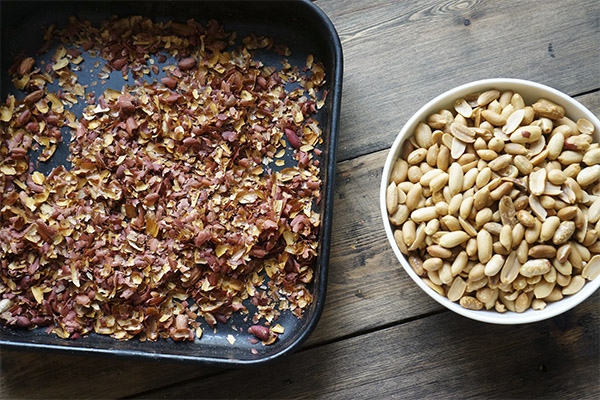
It has a bitter taste, but this does not particularly affect the taste characteristics of the fruit itself. Therefore, in the absence of contraindications should not be afraid to use it. And you can not avoid the fact that the husk is widely used in folk medicine to improve immunity. From it make a tincture, pouring the skin with vodka (you need to insist it for several days, then take 10 drops a day).
It is also used as a fertilizer for house plants. The husks should be poured with hot water and left in a bottle for a few days, and then added to the soil of non-flowering deciduous plants.
The benefits of peanuts with honey
It's no secret that honey has a large list of useful micro- and macronutrients, and in interaction with peanuts gives double benefit to the body. Such a treat has healing, antiseptic, soothing, as well as anti-cold properties. That's why to improve health or maintain its normal state in the absence of allergies or other contraindications it is good to use peanuts with honey for a course of one teaspoon once a day for 14 days. It can be consumed both in the morning on an empty stomach and at night.
To prepare a useful composition, you need to roast beans and, after cleaning them, grind them and pour honey 1:1. After this simple procedure, the useful treat is ready for consumption.
In this case, you need to be sure that you are not allergic to one of the ingredients. With particular caution, the remedy should be used during pregnancy, during lactation, as well as in children and people with hypersensitivity to any of the components.
Urbech from peanuts: benefits and harms
Urbech is a mass of finely crushed peanut kernels. The pasty mixture is achieved due to the high oil content of the beans. After cooking, the mixture is ready for consumption, both as a stand-alone dish and as an additive to pancakes, pancakes and simply with bread.
- Thanks to its high protein content, it is recommended for people with an active lifestyle and athletes. And magnesium and potassium are necessary for those whose work is connected with mental activity, as these elements improve memory and attention.
- It is also recommended for liquid blood to improve clotting and during the recovery period after a heart attack or for prevention.
- It is necessary to include in the diet of people whose activities are related to the nuclear industry, as peanuts can break down radionuclides.
- It helps during colds, as it strengthens immunity and faster recovery, and is the best source of energy and mood.
If abused, urbeche may cause irreparable harm to the body, cause allergic reactions, indigestion, weight gain, as well as inhibit intestinal function. Therefore, people who have any contraindications or cautions should abandon this sweetness.
Is it possible to eat peanuts while losing weight?
Groundnuts, despite their high fat content, are a common product when dieting. The primary reason is that the fats are uncomplicated and do not contain cholesterol. Therefore, they easily help maintain a figure, filling the body with everything it needs to maintain health and proper functioning of the internal organs, nervous system, bone and muscle mass, as well as improving the emotional state of the person.
During the regimen and to lose extra pounds, you are allowed to eat up to 12 kernels a day, and they should be used as a substitute for snacks. And eating 2 beans before each meal will create a feeling of fullness and reduce the portion of the main meal.
In no way should you eat pasta that contains a lot of sugar when losing weight. Not only will it not help to get rid of extra pounds, but in no time will make itself felt by fat deposits.
Also, it is better to eat peanuts in the first half of the day, as it takes a long time for the body to digest them. That is why it is better to refrain from eating peanuts after 16 o'clock.
Peanuts in medicine
For medical purposes, the peanut is especially indicated for vegetarians. Peanuts completely make up for the lack of meat in the diet, while not feeling hunger, excluding problems with bones, muscles and skin.

Also eating peanuts is recommended in case of bile stasis, gallbladder and stomach diseases. It strengthens the walls of blood vessels and gives them elasticity, which reduces the risk of atherosclerosis, as well as balances blood pressure.
Thanks to its ability to calm the nervous system and the serotonin responsible for good mood, it is necessary for people who are constantly exposed to stress and those whose work is associated with constant mental stress.
With the permission of the doctor walnuts can be added to the diet for snacking - it quickly and for a long time quenches the feeling of hunger, while its moderate use does not provoke the problem of excess weight.
For Diabetes Mellitus
Peanuts belong to the few representatives of legumes, which are allowed in moderation and in raw form to include in the diet of diabetics. It is argued that it:
- strengthens the walls of blood vessels;
- Prevents blood clots and cholesterol plaques;
- eliminates toxins;
- Lowers blood cholesterol levels;
- protects the liver from fat.
But if a diabetic sufferer is obese at any stage, peanuts should be excluded. The same applies to diabetics who have gastritis or ulcers in both acute and chronic forms.
Important: The glycemic index of peanuts is 15 units.
In pancreatitis
In acute pancreatitis, it is strictly forbidden to include peanuts in the diet. This is due to its high fat content. The same applies to the chronic stage. The percentage of fat inherent in peanuts is unacceptable in pancreatitis. It can lead to the following effects:
- Activation of pancreatic enzymes;
- inflammation of glandular tissue;
- Nausea, diarrhea, increased pain;
- Severe bloating and gassiness;
- destruction of the walls of the pancreatic ducts, leading to a worsening of the condition.
The only deviation from this rule is the retreat stage of the disease in remission, but only with the constant supervision of the doctor.
Gastritis
During gastritis, the patient needs to follow a strict diet both in the acute stage and in the presence of a permanent problem that has developed into a chronic form. In the presence of the disease, it is necessary to control the eaten fats, proteins and carbohydrates.
It is for this reason that the consumption of products of the legume family with stomach problems should be reduced. But 50 grams of peanuts a day is allowed and in some cases even prescribed by doctors. The only caveat is an individual intolerance. If there are pains of different nature after eating peanuts, its consumption should be stopped.
For the intestines
Groundnut helps to establish the work of the intestinal muscle. Fibre provokes its contraction, which helps to eliminate toxins and feces. If there are no serious problems with the intestinal tract, peanuts will not provoke diarrhea and painful defecation. Therefore, introducing peanuts into the diet is necessary to maintain normal intestinal microflora and prevent constipation and disorders.
For constipation
Peanuts help to combat constipation in the event that bloating and gas formation from it is not detected. Plant fats normalize the gastrointestinal tract and intestinal muscles, they break up stale stools and facilitate their excretion.
To get rid of this problem, even in the neglected stage, you need to do 2 days off, during which you need to eat peanuts (60-100 grams per day) and drink at least 2.5 liters of water. Such a diet will be able to establish the work of the intestines and help in getting rid of constipation. Of course, it can be included only in that situation, if there are no other health problems and contraindications.
With gout
In the presence of gout, peanuts should not be eaten categorically. Like all legumes, it contains purines, which provoke the production of uric acid in the joints, which is fraught with increased and more frequent attacks of pain and complications of the disease. That is why peanuts in gouty arthritis should be excluded from the diet.
For the liver
If the liver is healthy, peanuts can be eaten in any form, not exceeding the daily norm - 100 grams. The presence of vitamin E promotes the renewal of the organ cells, protects it from external irritants.
In the presence of pathologies or diseases you need a doctor's permission to consume peanuts. But most often it is allowed to eat with the proviso that the peanuts must be thermally processed, that is, dried in an oven, but not roasted.
In hemorrhoids.
During hemorrhoidal disease, a diet is always prescribed, and it is peanuts that are the #1 product to combat the ailment. The thing is that the high fiber content (9.5% per 100 grams of kernels) helps to eliminate toxins, as well as protects against cancer, which borders hemorrhoids stage 4. Therefore, at any stage of the disease in the absence of other contraindications, the earth nut should be among the main products.
Recipes of folk medicine based on peanuts
The groundnut can rightly be called a panacea for all diseases, they are treated for several centuries, using it in a variety of forms.

Milk with peanuts
The remedy is shown for such ailments as dizziness, colds, fatigue, drowsiness, absent-mindedness, respiratory diseases, diseases of the gastrointestinal tract, disorders of the cardiovascular system and others.
Its recipe is simple - you need to dry peanuts in the oven, and when the kernels cool, peel and grind them. Pour boiled milk (in the proportion of 1 tablespoon of crushed kernels for 1 cup of milk), stir and let stand 1-2 hours.
Take it before each meal for at least 15 minutes, but not during the exacerbation of the disease.
You can use such a remedy and for prevention.
Decoction of peanuts
This decoction helps in diseases of the lungs and respiratory tract in both children and adults. Pour 150 g of beans in 0.5 l of cold water, and boil for 15-20 minutes. Take on an empty stomach for 30 days. It relieves inflammation in the bronchi, facilitates coughing up sputum. And chewing the boiled kernels helps to bring back the voice.
Vinegar and peanuts for hypertension
In the proportion 1:1 pour the raw kernels with vinegar, tightly covered, put in a dark place. After 24 hours, they are ready for consumption. After breakfast and dinner, eat a few beans each. Vinegar activates the action of vitamins (potassium, magnesium, phosphorus) found in peanuts, which are necessary for high blood pressure.
Peanuts in cosmetology
Seeking helpers in nature to preserve beauty and youthfulness, women began several thousand years ago. It is no secret that the natural components contained in the oils fight skin problems and hair loss. That is why peanuts have been widely used in oil form.
For the face
Peanut oil has been chosen as a leader among its kind for use in cosmetology on a par with olive oil. Due to the presence of vitamin E and silicon in its composition, peanuts help to tone the skin in a few treatments. The thing is that they activate the production of collagen than rid the skin of exhaustion, dryness and wrinkles, returning a healthy glow without blemishes and redness.
Massage is best for the face. You need to put a few drops of oil on your fingers, and then from the forehead to the décolleté area, beat it into the skin.
Also popular in South America are masks using peanut powder. Dried kernels should be ground in a coffee grinder, then dilute them with warm water until a homogeneous pulp and apply to the face. Leave it on for 15 minutes, then rinse it off. Such a mask is suitable for combination and oily skin. Without overloading the skin with oils and without making it even more oily, the useful elements of peanuts penetrate inside, improving the condition of the skin.
It is especially recommended to use peanut oil externally during pregnancy and the postpartum period. Changes in hormonal background gives a failure in the production of collagen, the skin changes its properties, thinning, which leads to stretch marks, redness. Massage with peanut oil should be done daily, starting from the early terms. This will provide the skin with the necessary elasticity, preventing the appearance of striae. Therefore, peanut butter must be in the cosmetic bag of the future mother.
Hand massage helps to restore the skin, especially in winter, when it peels from the frost, the water balance is disturbed. Oil massages nourish the skin with vitamins, micro and macro elements. The skin after the first massage will get a healthy look and become soft and elastic to the touch.
For hair
The same goes for hair. Vitamin E has a beneficial effect on the root bulbs, which activates "dormant" and strengthens the existing ones. The oil envelops the entire length of the hair, eliminating brittleness and splitting of the ends, adding elasticity to the curls.
A few drops of the oil can be added to shampoo or conditioner or applied as a mask. To do this, before applying it to the skin of the head, rub the oil between the palms of your hands, and then rub it in with massaging movements. This massage should last at least 5-7 minutes, then wear a cap and wrap with a towel. Leave it for 20 minutes and rinse in the usual way.
Harm and contraindications
In most cases, it is raw peanuts that can cause the most harm. First, it refers to perishable products, which makes the fruit toxic, and secondly, in this form it is worse and longer digested by the stomach.
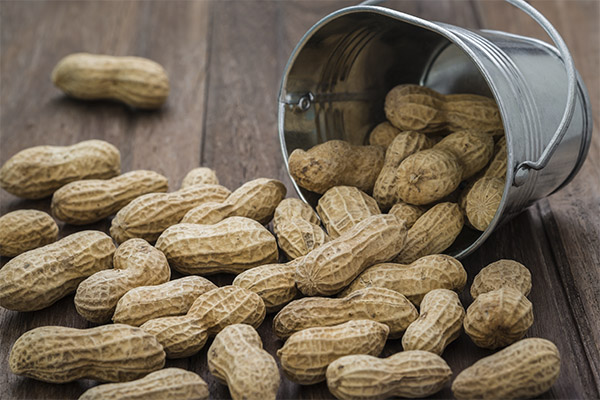
Also, peanuts are considered to be the second strongest allergen after honey. Even one eaten piece can cause Quincke's edema. Therefore, you should start with 1/5th of a bean the first time.
Peanuts should also not be consumed by those who have pronounced vein dilation, as well as elevated blood platelets.
As for roasted peanuts, the cautions are liver and gastrointestinal disorders.
But in some cases, peanuts can be completely contraindicated:
- Obesity. Because of its high caloric content, the peanut should not be consumed. In people with impaired metabolism, it will lead to irreversible consequences and rapid weight gain. Also with obesity at any stage, liver function slows down, and peanuts provoke the deterioration of its functioning.
- Gout, arthritis, arthrosis and other joint diseases. Purines contained in beans are a strong diuretic, which contribute to the excretion of uric acid in large quantities. This will aggravate the course of the disease, causing severe pain and negating the effect of the drugs used.
- Thrombophlebitis and varicose veins. The substances in peanuts make the blood thicker, which leads to the formation of blood clots. To avoid the problem, it is better for people suffering from this disease not to consume peanuts.
- Weak intestines. Peanuts intensify bowel function and contraction of intestinal muscles than causes painful diarrhea. Therefore, people suffering from disorders should treat eating peanuts with special caution.
- Allergy. The sensitizing activity of the peanut is very high. And it can manifest itself in the most unexpected symptoms. It is necessary to treat the use with extreme caution and before eating, test each time, starting with 1 bean. Reactions to it can range from redness to respiratory failure. That's why allergic reactions need to be considered in more detail.
Symptoms of peanut allergy
Symptoms of allergic reactions are commonly divided into 3 types, depending on the strength of the action:
- Mild - itching, skin rashes (more often around the mouth), swelling of the lips, red eyes, itching in the throat.
- Medium - vomiting, coughing fits, diarrhea, swelling of the throat, rash all over the body.
- Severe - anaphylactic shock, pale skin, sunken eyes, dizziness, loss of consciousness, drop in blood pressure and slowed pulse. If the allergen is not treated, death will occur within a few hours.
If an allergy to the fruit has been detected, it should not be used in any form, including as an additive to dishes and desserts. It also can not be used in cosmetology.
To avoid a complicated reaction, it is necessary to test the effects of peanuts. It will be enough to break the kernel and put the inner side (it is more oily) on the back of the brush. In the presence of allergies, the reaction of the body will not be long. Redness and itching will start within the first 30 seconds of contact.
The same applies to infants under 3 months of age. A breastfeeding woman should avoid or minimize eating peanuts. Even if she has no allergies, the baby may have them.
How to choose and store peanuts
To buy a good and tasty peanut that will only bring benefits, you need to remember the following:
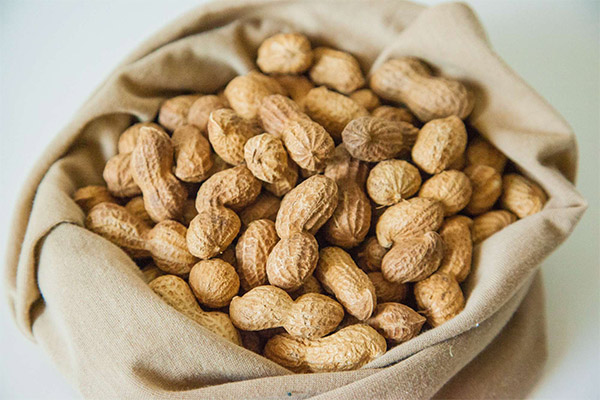
- The packaging should be transparent. When buying a peanut, you need to inspect each kernel because they are infected with fungus in no time. That is why even if a few seeds are missing, they should not be purchased.
- There should be no plaque on the kernels, the skin should be even, of uniform color, without a specific smell.
- Buying a large number of beans, preference should be given to those not peeled from the shell. They will definitely not be spoiled and are suitable for long-term storage.
- The choice of peanuts depends not only on taste preferences, but also on what method and shelf life will subsequently be used.
Peanuts can be stored in the refrigerator and even frozen, but only whole without damage. Crushed or damaged beans will lose the oil and with it the color and flavor from the cold.
Raw, peeled kernels should be stored in airtight ceramic or glass containers. Plastic contributes to the release of bitterness in the beans. Roasted peanuts can be stored in cloth bags, but not in polyethylene bags, in which the fruit quickly suffocates and disappears.
Peanuts should not be stored in open containers - air and other influences negatively affect the taste and appearance of the beans.
How to eat peanuts right
There are no clear rules about how you should eat peanuts. It is only necessary to listen to the body, as well as to remember at what diseases it is not allowed to eat it. But there are a number of questions that arise when including peanuts in a regular diet.
How much can be eaten per day
The norm for a healthy person with no contraindications and allergies ranges from 50-100 g per day. Children should be given no more than 3 fruits per day, and the weekly rate is 9-10 pieces. Pregnant and nursing women should listen to the recommendations of doctors.
Is it possible to eat peanuts at night and on an empty stomach?
Peanuts belong to the products that are allowed to eat on an empty stomach. Moreover, it is recommended to drink peanut butter in the morning at least 30 minutes before your first meal. It will satiate the body.
As for the evening, you should give up on beans. They are caloric and long digested, so it is better to eat them before 15-16 hours of the day. Later there is a probability of gaining extra pounds, stomach pains.
Is it possible to eat with the husk
The skin that covers the kernels is very thin. When eaten raw without any heat treatment, the peanut can do no harm. But depending on the variety and storage it can be bitter.
Roasted or dried kernels are better to eat peeled. This is because the thinness and dryness of the husk can stick to the mucosa, irritating it. If it remains in the throat, it will lead to coughing attacks, and in the intestines - to constipation.
Can you eat while fasting?
When fasting, you can not eat animal products. But for normal functioning, the body needs protein. And to get it in full, without feeling weak and malaise, you can eat legumes and nuts. Therefore, during the fasting period peanuts, if there are no contraindications, must be included in the daily diet.
Do I have to wash peanuts before eating them?
Like any product bought raw, peanuts need to be processed. The best way is to soak it in cold water and leave it for a couple of hours. Both peeled and shelled kernels should be treated in this way.
How to roast peanuts
Before roasting, make sure that the peanuts are a uniform pinkish color, without black spots. After that, rinse the kernels with water and dry them. Next, you need to decide which method is more convenient. All of them are simple in action and do not require special utensils.
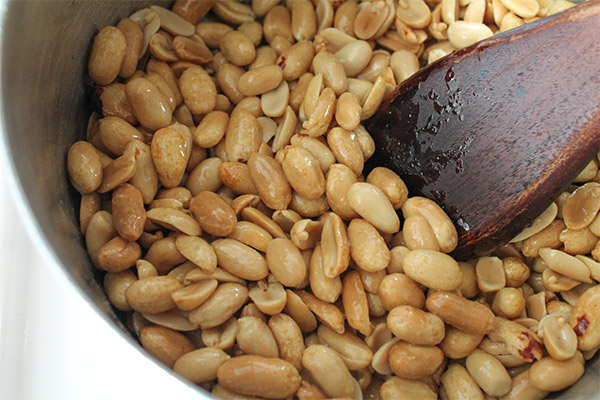
Flavorless peanuts retain more benefits, but if there is a desire to salt, you need to splash them with salted water before cooking.
In a frying pan
Roasting the kernels in a pan, you need to lay them out in a single layer. If the beans lie on top of each other, they will fry unevenly. It is necessary to heat the pan on a high heat, and then turn down the heat, stirring all the time, to fry them for at least 15 minutes. After that, you should taste the peanuts or determine the degree of readiness by the state of the peel. If the kernels are toasted, the skin will begin to peel. After that, let them cool down.
In the microwave.
Pour an even layer of kernels on a plate. Then, without covering the container, turn on the microwave on full power for 5 minutes.
In the oven
Evenly layer peanuts on a baking tray, then put it in a preheated oven for 20-30 minutes. At the end of the time, take it out and let it cool.
Should the peanuts be washed before roasting?
The question of whether or not the kernels need to be pretreated before roasting is controversial. Some say that it is not necessary, because during cooking, the high temperature will kill all the bacteria. Others say that this procedure is necessary because peeled packaged peanuts spoil quickly, causing pathogenic bacteria to multiply instantly. But rinsing the product in a colander under cold running water will not be superfluous. In addition, this will get rid of the nuts of bitterness, which is inherent in the peel.
How to peel peanuts quickly
There are 2 most convenient methods for peeling peanuts from raw kernels.
- Pour the kernels into a container and pour boiling water over them. After 7-10 minutes the peel will start to come off the bean. Drain the water and peel each kernel.
- Put the peanuts in a bag and on a flat surface without pressure go over them with a rolling pin. The peel will peel off on its own.
What can be cooked from peanuts: recipes
In cooking, the use of peanuts is widespread, and in the preparation of not only desserts, but also sauces and main dishes. He gives them a spicy taste and flavor. But sweets made of it are especially popular.
Peanut paste
Pasta is great as a complete breakfast, it is loved by adults and children alike. And it is prepared very easily and without cost.
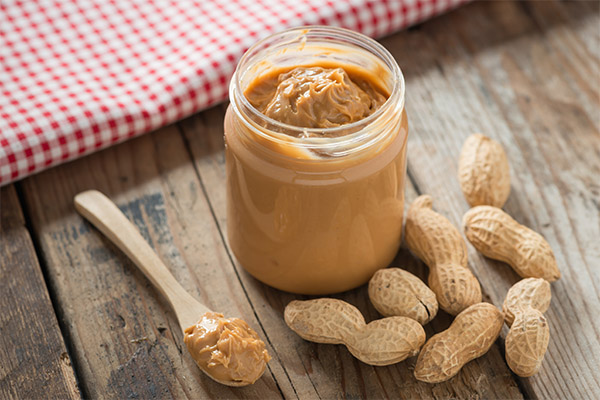
Toast 500 grams of raw peanuts in the oven at 180 degrees for 5 minutes. Then grind it in a blender as finely as possible. Add salt (1/2 teaspoon) and 1 tablespoon vegetable oil. Mix again in a blender. If you want to make it sweeter, you can add a tablespoon of honey.
It is better to store the mass in a glass jar in a cool, dark place.
Biscuits .
The sweet can be a great snack during a fast or diet. And for its preparation takes no more than 20 minutes.
In a pan with non-stick coating over low heat to melt honey (50 g) and sugar (100 g). Stirring constantly with a spatula, bring the mass to a homogeneous state and caramel color. Add peanuts in the syrup, stir it and with a spoon put it into a mould without turning off the fire. It should be constantly heated, so that the caramel does not stiffen and easily removable from a spoon.
Halva
Home-made halva differs in color from the purchased, the main reason for this is that it is made from natural ingredients, without any chemical additives.
To prepare you will need semolina, roasted peanuts and melted butter 100 g each, sugar (200 g), water (0.5 l).
Heat a frying pan and pour semolina on it, warm it up and pour half of the oil. Fry until golden brown. Chop peanuts in a blender and fry in a second pan with the other half of oil. Mix both masses. Pour water into a saucepan, add sugar and cook until all water has evaporated. Put the viscous mass in a mold and put in a cold place for a day.
Can I Give Peanuts to Animals
Peanuts are the only legume in the legume family that can and even should be given to animals. This is done in order to prevent intestinal stasis. It is even better to give it in the form of a paste and add peanut oil to regular food. The amount depends on the size of the pet.
When giving kernels to your pet for the first time, you need to watch out for allergic reactions or stomach upsets.
Interesting Facts
- The name peanut was invented for a reason. The ancient Greeks, having seen this fruit, noticed that the pattern on it resembles a spider, and called it αράχνη.
- The state of Georgia in the United States has a monument to the peanut.
- The stems of the peanut bush are widely used in agro-industry, making hay and fertilizer.
- The peanut rind is used to make plastic.
- Peanut oil is the main ingredient for the production of nitroglycerin.
«Important: All information on this site is provided for informational purposes only for informational purposes only. Check with your health care professional before using any recommendations. specialist before using any of the recommendations. Neither the editors nor the authors shall be held liable for any possible harm caused by materials."

